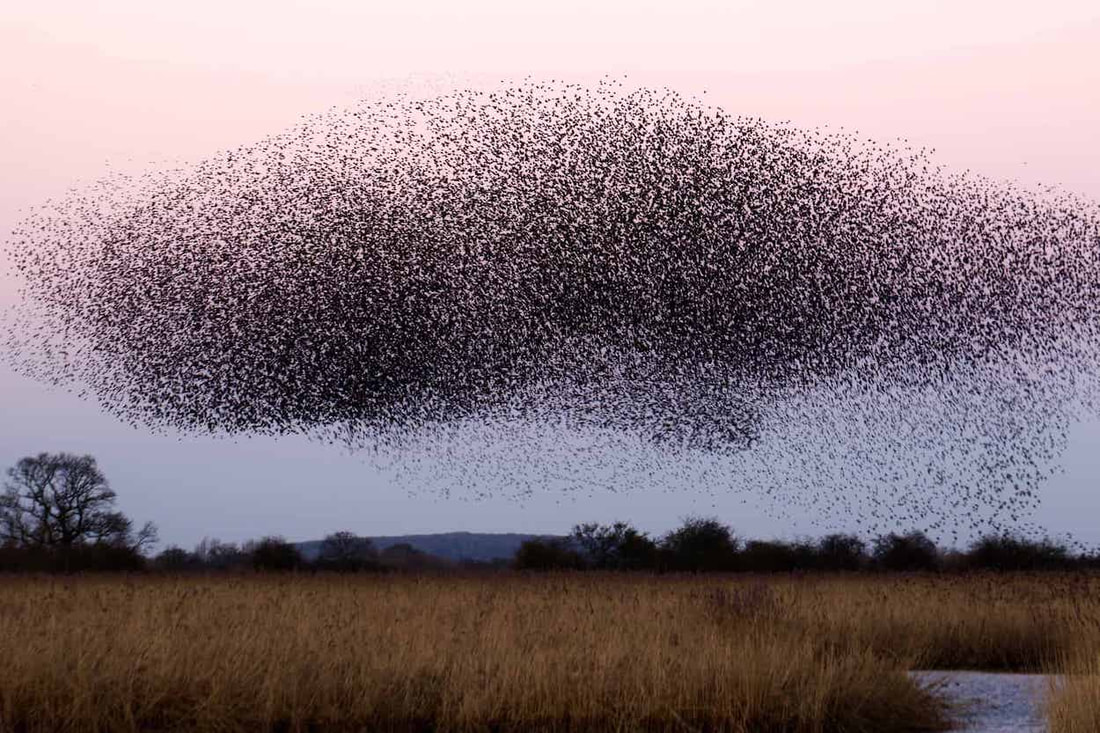Forests are places where a great diversity of life thrives. Thinking like a forest and understanding how a forest works can help you discover new ways to promote creative thinking, encourage support and foster better communication in your organisation.
Photo by Galan Regatama on Unsplash
Back in 1997, chairman and CEO of Mitsubishi Electric America, Tachi Kiuchi said this about what he’d learned about business - from the rainforest: “With thin soil, few nutrients, and almost no resources, rainforests could never qualify for a loan. Yet rainforests are more productive than any business in the world, home to millions of species of plants and animals, so perfectly mixed that they sustain one another and evolve into ever more complex forms. These environments excel by adapting to what they don’t have.”
Kiuchi and his colleagues came up with a surprising business principle based on this: by applying strategies and practices gleaned from nature - such as introducing feedback systems, finding niches, and using cooperative relationships - business can adapt rapidly to changing market conditions and attain greater and more sustainable profits. Similarly we believe one of the most valuable lessons that you can learn for your teams, your organisation, and how you can work together better in the current times - is to think like a forest and how that relates to the systems you are a part of. The current challenge
When it comes to leading your team in a post-covid world, can you see the wood for the trees?
Working from home and the lonely reality of spending too much time in front of screens, a lack of in-person contact, and reduced ‘creative collisions’ will all be impacting your team’s ability to perform, be productive and creative, and thrive. Not to mention the effect on everyone's health and wellbeing. There are few precedents or maps for these new and uncertain circumstances. So how do you navigate these times? To survive and thrive now it’s essential to be resourceful and to adapt and change. Actually nature can help you both regenerate and realise your organisation’s potential in these challenging times, because it's a living example of how a life-affirming, responsive, interconnected and innovative system works. Take bees. Bees are more than busy; they’re nimble. Despite their tiny brains (about the size of a sesame seed), individual bees can sense what job the colony needs doing and get to it instinctively. A problem with complex human systems like organisations is that we tend to work in silos, where various parts don’t - or don’t know how to - talk to each other enough, which makes us slow to change. Nature’s systems in contrast are in a constant state of dynamic flux where everything is inherently flexible and co-operating more than we realise. Although you may not think of your organisation in such terms, it is a system where everything is interconnected. So how can you apply lessons from how a forest works to your own organisation? How a forest works
Forests are vibrant, interdependent, circular and messy places where a lot of diversity comes together as one. Yes, there is competition, but rather than winner-takes-all it's competition that balances the whole system.
Like a forest, teams thrive best by helping each other, by networking, collaborating, coming together in partnership and working together. Thinking like a forest in a team setting has the power to help you adapt to change, build resilience and wellbeing. Have a look at three of the different layers in a forest:
The relationship between them, between the fungi in the soil, the trees, and the birds in the canopy can show you ways to feel more connected, stay positive and work together better in these uncertain times. Here’s how: 1. Below ground: communication, feedback and support
Ever heard of the Wood Wide Web? Below ground in a forest there is a vast information highway that allows trees to communicate with each other. It’s a threadlike fungal network that cooperates with the trees to help them survive and thrive. You won't see it on the surface because it's all happening out of sight.
Trees linking to this Mycorrhizal fungal network help out their neighbours by sharing nutrients and information, warning about insect attacks, or sabotaging unwelcome plants by spreading toxic chemicals through the network. By exchanging nutrients and information like this the individual trees support one another and provide feedback, so that others know what’s needed and where to adapt and change. (The fungi take a 20% nutrient commission.) A forest would break down if there wasn't this system of support and communication. Likewise your organisation. As an example of this kind of thinking, one of our clients has set up wellbeing working groups with colleagues drawn from different parts of the organisation, tasked to come up with ways to support people’s wellbeing. (One of the main challenges they have is how to ensure staff take breaks or go for a walk, when everyone feels too busy to do that.) As another example, mental health charity Shout 85258 have introduced peer-to-peer text chat for their frontline phone support team, so that they can directly support each other. (NB this is more than just adding a new Slack channel, it’s a way to meet the specific needs of that organisation.) At website analytics business, Hotjar, they instigated chatroulette-type coffee-break sessions where co-workers are randomly paired up to have a 30-minute chat. In this way they all get to know each other, have those creative watercooler moments and share ideas and information. Some questions to ask yourself and your team: A forest’s communication system is supportive by design and works by passing the right information in the right way at the right time, so:
2. Trees: cycles, structure and growth
In a similar way to the best-performing teams, trees are not solitary individuals that compete for space and resources. Instead they work together to thrive and grow.
To be resilient and be able to support others in difficult times when there are scarce resources, a tree needs a strong core and to have stored up reserves. In difficult times for any group, core strength comes from finding out what matters to each of you and as a group, and what you each need. Knowing what matters and what’s needed - and acting on it - is what’s going to see you through. And when the time is right, to grow again. Trees do that in cycles. A tree’s growth cycle follows the different phases of the year: shoots in spring, flowers in summer, fruit in autumn, roots in winter. In autumn, a tree sheds its leaves and appears to be dormant, but to survive through the winter much of the tree’s energy is spent growing its roots in search of water, oxygen and nutrients, so that it can spring back to life several months later. Every team and organisation needs to go through similar phases to reflect, recover and work out what’s important before a period of action or growth. It may be enforced, but now is a good time for that. To discover how it pays to follow the seasons in how you work, read my blog on the seasons here. Creating space is also important in a forest. When trees fall in the forest, they open up sunlight and space in the forest floor for new life to grow and thrive. It is an essential part of how the ecosystem works. In organisations, you also need to work to create space so that you can shed new light on problems and challenges and let new ideas and solutions grow. Some questions to ask yourself and your team: Trees in a forest are constantly responding to change by working on what matters and what they need, so:
Starling murmuration. Photo by James Wainscoat on Unsplash
3. Birds: collaboration, gatherings, teamwork
Birds are highly interactive and vital members of forests. They help trees grow by reducing the effect of insect predators, play a critical role in dispersing seeds and nuts, and are important tree pollinators.
In return, forests provide food, nesting sites, and warmer homes for birds. When thinking about birds as part of a metaphor for your team, think also about the way you gather, because it matters. For birds, winter is the time for murmurations and gathering in flocks. Murmurations - the dazzling displays of large numbers of birds, usually starlings, who all fly and change direction together - are still something of a mystery to experts. The prevailing theory is that birds come together in this way for safety in numbers against predators, keeping warm and exchanging information. The main driver is clearly the power of togetherness rather than individual performance. In terms of your team, at this time it’s really important to arrange gatherings and celebrations that keep you all aligned and moving in the same direction, to maintain morale and team spirit, to build relationships and encourage conversations that go beyond tasks and what’s on your to-do lists. You can find plenty of good ideas for online gatherings by searching on the internet, or if you want to explore the ideas in this blog as a group, have a look at our Thinking Like a Forest session. Interestingly, birds succeed in staying aligned and in formation as part of a murmuration by following three simple rules: 1) Move in the same direction as your neighbour 2) Remain close to your neighbour 3) Avoid collisions with your neighbour While I’m not suggesting these are the same rules to apply to your team, it shows that a set of simple principles can have a big impact and help to keep everyone moving in the same direction. As an example of an organisation with innovative principles, Buurtzorg is a very successful Dutch healthcare business that grew from 4 to 10,000 people in 9 years (!) whilst retaining a more personal way of delivering health, and looking after each other in the process. Here are some of the principles they use that have contributed to their extraordinary success:
Some questions to ask yourself and your team: Birds instinctively know it’s important to spend time together, and large gatherings of birds somehow manage to stay in formation with a few simple rules, so:
Learning from these 3 ideas - the fungal network, the trees and the birds - gives you a snapshot of how thinking like a forest could help your team come together to support each other, stay positive and aligned, and collaborate better in these times. When you’re considering how you work together in the new normal, have a look at natural systems - you’ll discover new ways to create a stronger organisation, a more effective team and better working environment. The world is changing fast, if you’re ready to change with it, enquire about an online or outdoor team building session for your teamhere. Comments are closed.
|
Author & CuratorNigel Berman is the founder of School of the Wild. Archives
March 2024
|
Leaders |
About Us
Support |
|




 RSS Feed
RSS Feed



